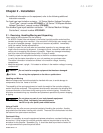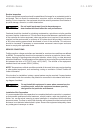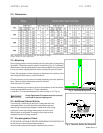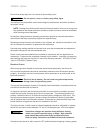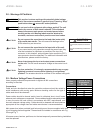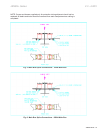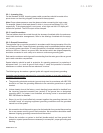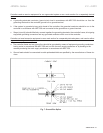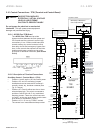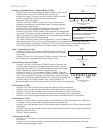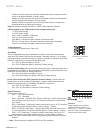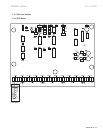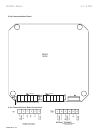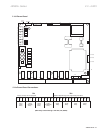
JKSSS+ Series - 20
JKSSS+ Series 2.3 - 4.2KV
On the Standard JKSSS, incoming power cable connections should be made at the
points shown on the wiring diagram furnished with the equipment.
Note: Proper phase sequence must be observed when connecting the input power.
For example, phase A must lead phase B, which in turn must lead phase C by 120°
respectively. If the phase rotation is not correct, a fault light and the LCD display will
indicate the problem. The SCR output will be clamped.
2.9.2- Load Connections
The load cables should be routed through the wireways furnished within the enclosure.
Load cable termination arrangements, refer to the drawings furnished with the equip-
ment.
The controller line-up must be grounded in accordance with the requirements of the Na-
tional Electrical Code. Proper equipment grounding must be established before making
any incoming power connection. If a main ground bus is furnished, make the ground con-
nection to this bus. If there is no ground bus, the sections which are shipped separately
should be connected in such a way as to ensure a continuous grounding path.
Each section contains a vertical ground bus extending from the main ground bus or ground
pad to each controller compartment.
Special attention should be paid to protection for operating personnel, to protection of
equipment itself, (i.e. such as ground fault relays, if used) and protection of sensitive
transducers or control devices that are electronic in nature.
The following may be used as a general guide with regard to equipment grounding.
Controller used as service equipment for a grounded system or as a main section for a
seperately derived system:
a. The grounding electrode conductor (ground wire) sized in accordance with NEC 250
should be run from the grounding electrode to the controller ground bus or ground
terminal.
b. Unless already done at the factory, a main bonding jumper should be installed from
the incoming grounded connector bus (neutral) to the ground bus or designated
grounding point. If a jumper is not furnished, one having a size in accordance with
NEC 250 should be selected.
c. Steps (a) and (b) should effectively connect together the grounding electrode, the
controller frame, all outgoing equipment grounding conductors and the grounded
neutral bus of the system.
d. No connection should be made to ground on the load side of any neutral disconnecting
line or any sensor used for ground fault protection. No connections should be made
between outgoing grounding connectors and the neutral.
e. Where the controller or system is dual-fed (double-ended) and has ground fault
protection, special precautions are necessary to accomplish proper grounding and
bonding.



